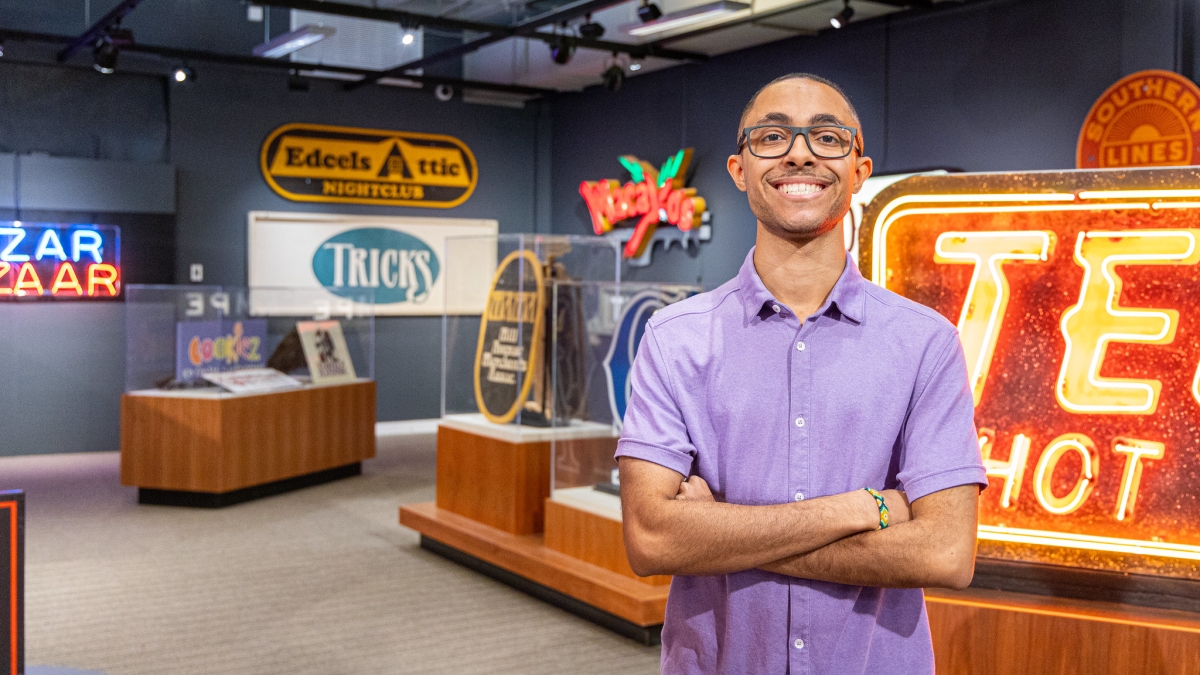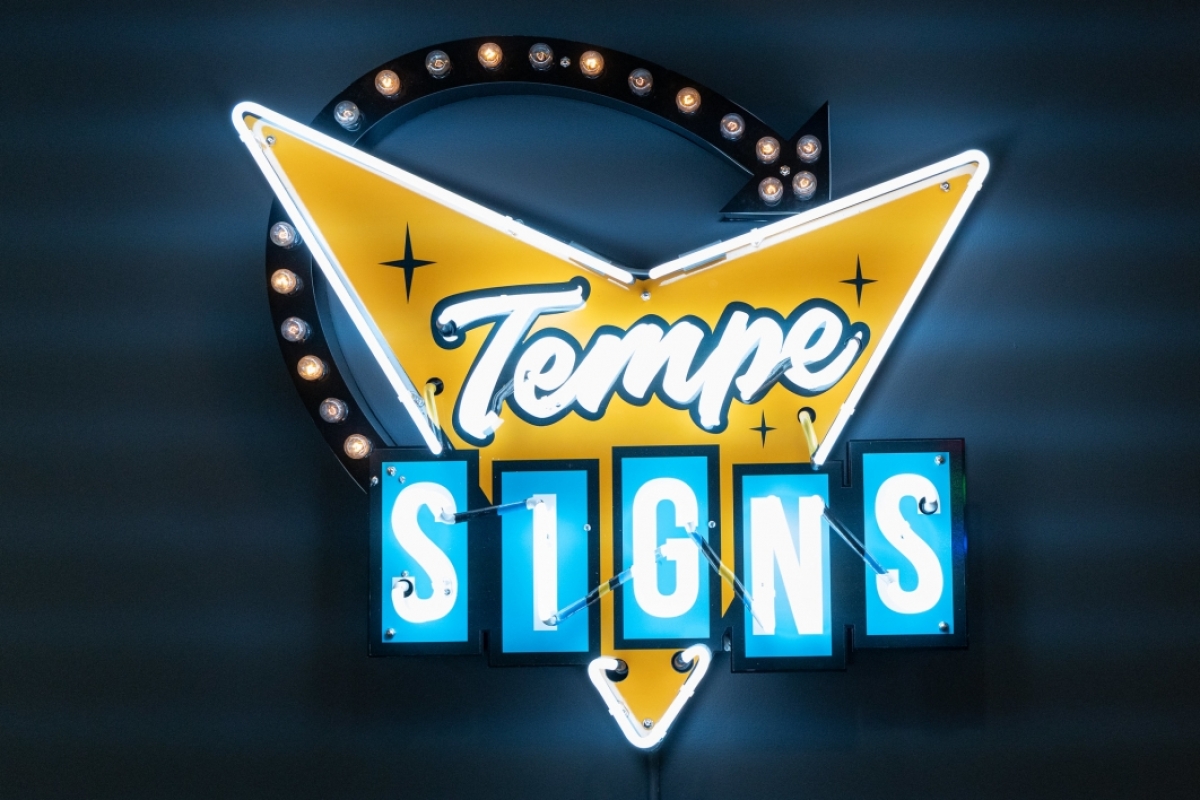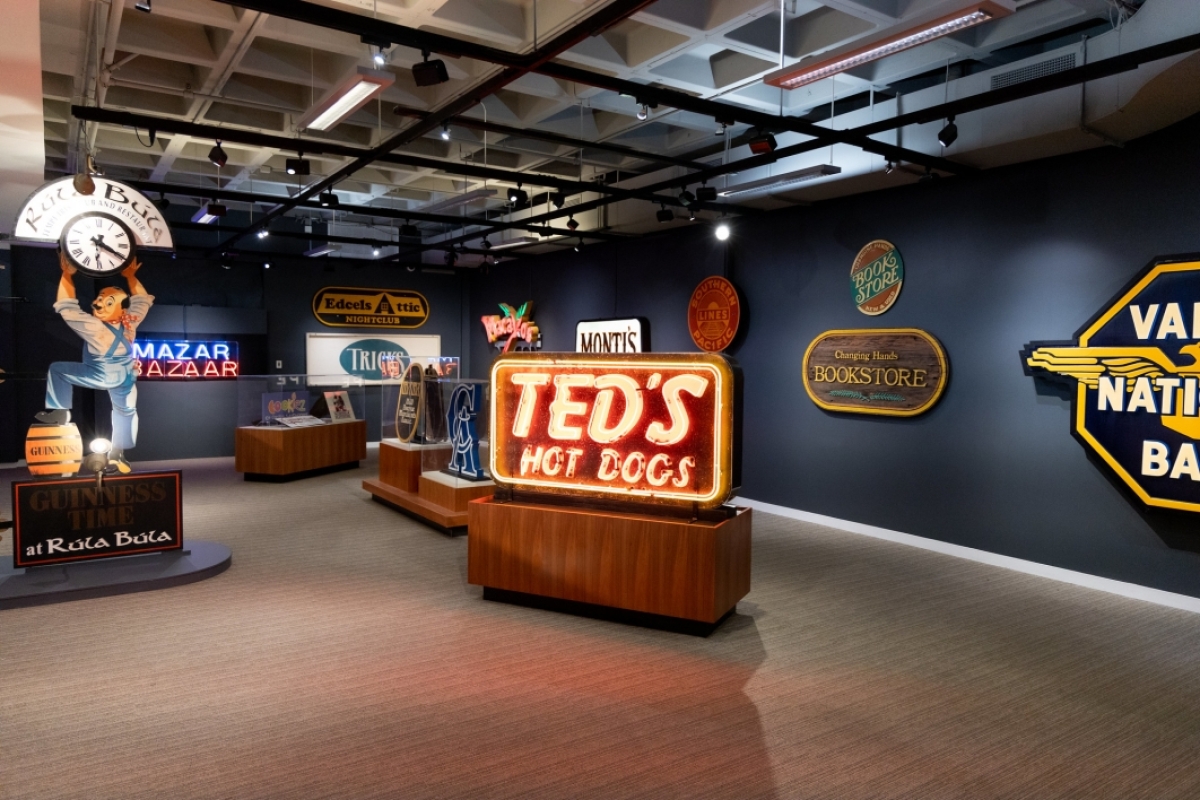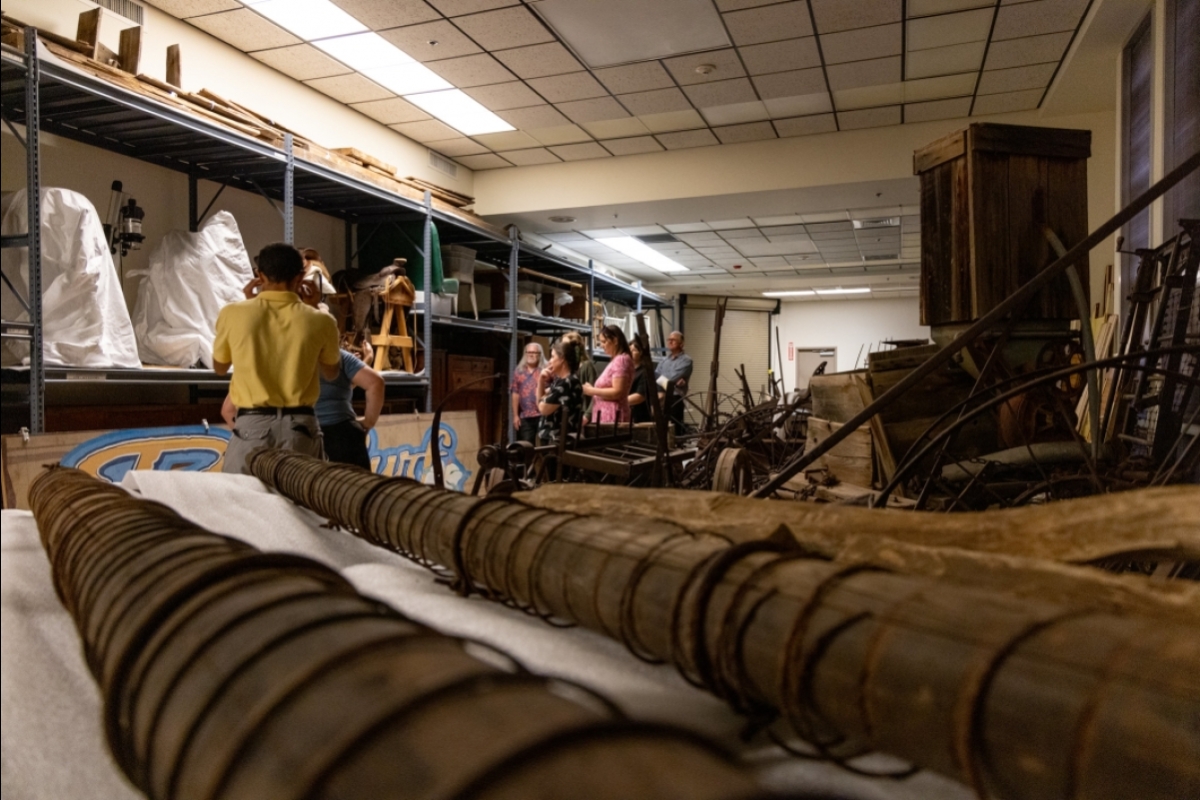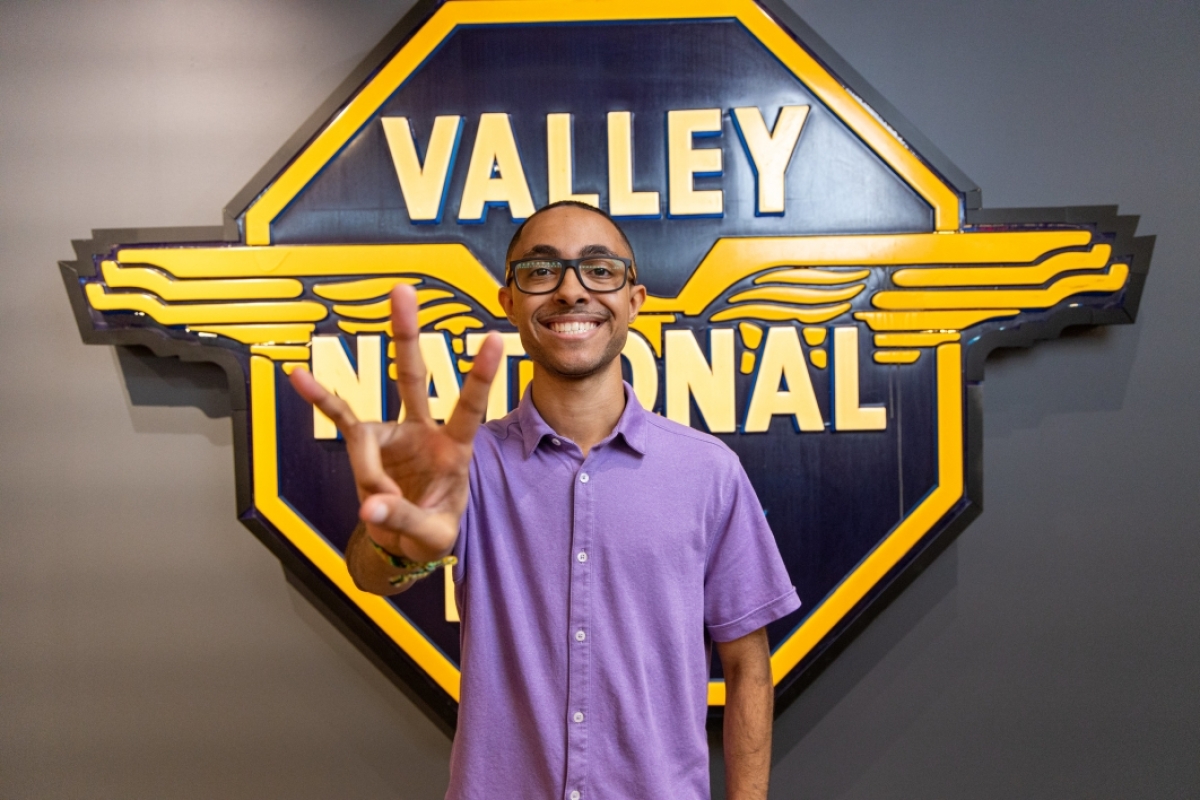Aubrey Feyrer knew while growing up in Arizona that he wanted to study history, but he didn't know he would play a pivotal role in preserving Tempe's.
Feyrer, a current graduate student in Arizona State University's School of Historical, Philosophical and Religious Studies, is a collections assistant at the Tempe History Museum. He has been working on an exhibit called "Tempe Signs," which features a number of notable signs from the city's most-loved businesses, including Big Surf, House of Tricks, Monti's La Casa Vieja, Rúla Búla and more.
After earning a Bachelor of Arts in history and a minor in philosophy from the School of Historical, Philosophical and Religious Studies in 2021, Feyrer found his way to the Tempe History Museum as an intern, working on a project for Tempe Sister Cities. He later applied for a new role of collections assistant.
"Tempe Signs" is the first exhibit Feyrer has been involved with from start to finish. He researched each sign in order to tell each item's history on the display cards and had a voice in determining the layout and which pieces to include in the exhibit. He also was responsible for picking up the artifacts from local community members and assisting in the installment at the museum, which proved to be a challenge due to the size and materials of the artifacts.
"Working with signs requires great care," Feyrer said. "They may look huge and sturdy, which makes you think you can just take it easy while handling them, but that is not the case."
Oftentimes the signs came with decades of wear and required special cleaning and support from niche experts in the Arizona community, particularly in handling and repairing neon signage. Graham's Neon in Mesa and the Ignite Sign Museum in Tucson offered their services and skill in preservation. Ignite even created a special sign exclusively for the "Tempe Sign" exhibit that is featured at its entrance.
"The amount of support we got from these communities has been the coolest part of designing the exhibit," Feyrer said, noting how critical local collaboration is in a project like this. "In simple terms, it makes exhibits better."
ASU has a strong relationship with the Tempe History Museum, fostering internships like Feyrer's and faculty event partnerships. The Tempe History Museum also provides support to students seeking local resources outside of the university.
"As an institution with extensive public archives, we are a great resource for students researching all aspects of local history," said Josh Roffler, curator of collections at the Tempe History Musuem. "We also do a lot of our own research and storytelling about the history of ASU. As a museum focused on Tempe, we recognize the enormous role that ASU has played in the history of the community."
A fellow ASU alumnus (04’ MA anthropology) and Feyrer's mentor, Roffler spoke highly of Feyrer's contributions to the exhibit.
"Aubrey really understands the importance of the museum and its role in the community. We appreciate his fresh perspective and the pride he takes in documenting history and sharing it with the public," Roffler said.
When asked if there was a particular sign that stood out from a historical perspective, Feyrer pointed out a reflective traffic notice sign for the third and closing debate between George W. Bush and John Kerry during the 2004 U.S. Presidential Election that was held at Gammage Auditorium.
"It speaks to the rich history the university and Tempe has," Feyrer said.
Coincidentally, Feyrer's favorite sign — the Valley National Bank sign — also has a bit of ASU history connected to it, although he did not know it until his research led him to a familiar campus spot.
“One of their branches was located on Rural Road and Apache Boulevard, and while I never visited this bank, I found out through researching Valley National Bank that it had an iconic gold, geodesic turtle-like dome design,” he said. “The branch became known as ‘the turtle dome,’ and when the building was torn down in 2007, the dome survived and was repurposed into a ramada cover at Vista del Sol.
"Discovering that the Valley National Bank sign had a connection to a location on campus I knew really resonated with me."
Feyrer said he also has feelings of fondness and nostalgia for two signs from Tempe businesses that had recently closed on Mill Avenue: Rúla Búla, which closed in 2021 after 20 years in business, and Monti's La Casa Vieja, which closed in 2014 after 60 years in business.
“They are the kind of restaurants that touched and happily served so many people in Tempe’s community, and their closings were saddening moments for loyal patrons.” Feyrer said.
The Tempe History Museum hopes that visitors will find personal resonance with this exhibit and allow space for them to honor their own milestones and memories.
"Signs represent places that sometimes have great meaning in our lives – where we had our first dates, first jobs, graduation dinners and so forth,” Roffler said. “The exhibit will give visitors the opportunity to reconnect with their memories of beloved places from the past."
The "Tempe Signs" exhibit is set to open to the public on Sept. 14. The Tempe History Museum is open Tuesdays through Saturdays from 10 a.m. to 5 p.m. and is free to visitors.
Top photo: ASU history graduate student Aubrey Feyrer photographed with the "Tempe Signs" exhibit at the Tempe History Museum. Photo by Meghan Finnerty/ASU
More Arts, humanities and education

ASU professor’s award-winning book allows her to launch scholarship for children of female shrimp traders in Mexico
When Arizona State University Associate Professor Maria Cruz-Torres set out to conduct the fieldwork for her third book, "Pink Gold," more than 16 years ago, she didn’t count on having major surgery…

Herberger Institute Professor Liz Lerman to be honored as Dance Magazine Award winner
Dance Magazine has announced that Arizona State University Herberger Institute Professor Liz Lerman will be honored as a Dance Magazine Award winner at a ceremony Dec. 2 in New York City.“I…
AI literacy course prepares ASU students to set cultural norms for new technology
As the use of artificial intelligence spreads rapidly to every discipline at Arizona State University, it’s essential for students to understand how to ethically wield this powerful technology.Lance…
